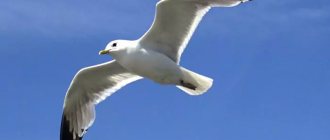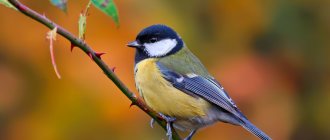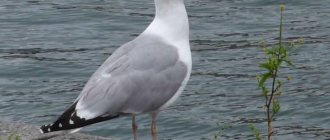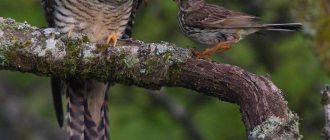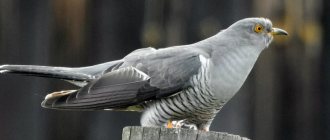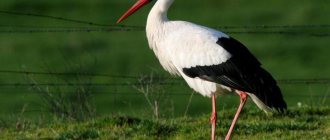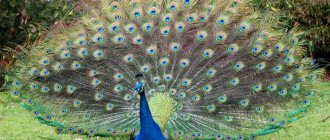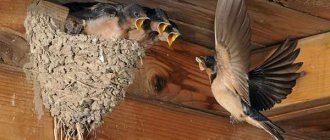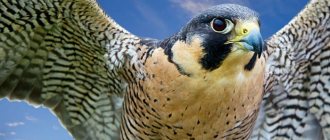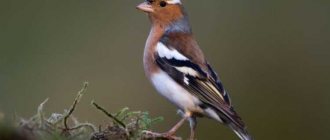It is difficult to imagine a sea or lake coast without these birds. They live wherever they can catch aquatic inhabitants or collect waste. The seagull is an aggressive and quarrelsome bird. They live in large groups and constantly fight for a better place or food. Sometimes these fights go as far as destroying eggs and killing chicks. Moreover, they actually occur in all corners of the world. Regardless of their habitat, the nature of the birds does not change. This is not all the interesting facts about the seagull.
Relationships between gulls exist only at the level of joint hunting. Otherwise, these birds try not to contact each other. Between different types of contacts there is no contact at all. Only occasionally does a larger bird eat a smaller fellow. Curiously, these birds are considered true generalists. They fly well, can run fast and dive. Even the popular sewing machine was named “Seagull”. We have collected for you the most unusual and amazing facts about seagulls that you definitely didn’t know about..
Habitat
Seagulls prefer to settle where there is a body of water nearby. Their favorite place is the sea coast. However, some species prefer fresh reservoirs and rivers to salt water. Such noisy birds simply love to play pranks. They cause a lot of trouble for people, dirtying everything possible with their droppings, stealing food, and these birds constantly scream loudly. Seagulls fly in large numbers to sea vessels to beg for something tasty with loud cries. Experts consider such birds to be the orderlies of the waters and the coast.
Top 3: the most interesting facts about the seagull
- These birds attack not only each other. If someone enters the territory of the colony, all the birds - and there may be several tens of thousands of them - will rush to defend their land. They fight so fiercely that they can kill any animal to death.
- Sailors learned to determine the proximity of a storm by the behavior of these birds. If the birds are sitting on masts or on the water, then there is no need to be afraid of the storm.
- These birds in cities not only collect waste. They can fly onto busy streets and beg for food from passers-by.
Features of character and lifestyle
Seagulls are most active during the daytime. For the most part, they are engaged in trying to find food for themselves. Since seagulls are quite voracious birds, this task becomes of paramount importance for them. In an attempt to find food, they can fly a considerable distance from their habitat, but in the evening they return to the nest to spend the night. In this way, seagulls take shelter from the wind and escape from adverse weather conditions. In addition, a large flock can scare away natural enemies that the birds could not cope with alone.
Six swans appeared on Kleban Bull
Six swans appeared in the Kleban Byk Regional Landscape Park. A pair of swans hatched them for 45 days. Park staff have been monitoring them for two years.
“When they flew up with a quadcopter, they got scared and hid under their mother’s wings and climbed onto her back. They perceive him as a predator and save the offspring,” said park employee Galina Semenikhina .
Swans are already swimming on their own, but only next to their mother. In three months they will learn to fly.
By the way, this winter 171 swans did not fly away from the park and spent the winter at the reservoir.
In one polynya there are 171 swans and 480 ducks. How an unusual winter affected the birds in Kleban-Byk
What does it eat?
Seagulls eat a wide variety of foods; if necessary, they can easily switch from one type of diet to another. In coastal regions, gulls hunt and catch fish, crustaceans, mollusks, echinoderms, and aquatic worms in the sea. In search of prey, they first look for it near the surface of the water, without diving completely, but only lowering their head or part of their body into the water. Occasionally, birds may circle above the water in search of food. If the prey of a seagull is an animal covered with a shell or shell (a mollusk or crustacean), then the bird lifts it into the air and throws it onto the stones from a great height to break the hard shell. Seagulls also readily feed on waste near fishing vessels and enterprises that process seafood products. On land, gulls consume both plant and animal food (rodents, lizards, chicks and eggs of other bird species, insects and their larvae, berries, grain). They can eat carrion and food waste. In addition, gulls can destroy other people's nests and take prey from other bird species, for example, terns, cormorants, skuas, puffins, and ducks.
Appearance
Martyn is a bird from the gull family. It is better known as the common tern. She has a slender build, long sharp wings and a deeply cut tail. The weight of males is 150 g, which is slightly less than that of females (175 g). In mature individuals the crown of the head is black. The wings and back are bluish or ashen. The throat, chest, and belly are gray. Young birds are distinguished by white feathers on the forehead, brown back and wings. The body length of individuals of both sexes does not exceed 40 cm. The wingspan ranges from 70 cm to 1 m.
Reproduction
Most seagulls are monogamous birds. Birds arrive at their nesting sites in the spring. And they begin to conduct their mating games, during which they scream loudly, throw back or tilt their heads, bend, feed each other. Seagulls nest in colonies, which consist of several tens or thousands of pairs, sometimes they can nest one pair at a time. Birds often occupy their old nests or build new ones.
Nests
The gull's nest is located in open places, right on the ground (on a rocky seashore, cliffs, or less often in thickets of grass). The distance between nests varies from 1-3 to 25-30 m. Both the male and the female build the nest, using plant material to build it. The inside of the bird's nest is lined with feathers or wool.
Eggs
In one season, the female, as a rule, has one clutch of 2-3 eggs of pale brown or greenish-blue color. Both the male and the female incubate the eggs for 28 to 30 days in turn. Newborn chicks are covered with brownish-gray down with dark spots. The first days they are helpless, but they quickly learn to rise to their feet, and after 3-4 days they leave the nest. The chicks begin to fly 38-45 days after birth, but for another month or a month and a half they depend on the parents who feed them. Young birds reach sexual maturity at 5-6 years of age.
Mikhail Kheifets
Why "The Seagull" became a comedy
eternal delusions?
(M. Volchkevich, “The Seagull. Comedy of Delusions”, M. 2005)
A book with that title was sent to me from Moscow. Readers in Israel are unlikely to see it: the circulation is small, they probably won’t bring it to us. But this text immediately struck me - both in form and content. First of all, the genre is amazing! There is nothing in it from ordinary literary research, not even the inevitable (and not at all interesting to the general reader) references to sources. The entire book looks like a huge monologue by an unknown director addressed to the actors performing this Chekhov play. He explains to them why the author, Chekhov, is captivated by this topic (“stories about literature and five pounds of love”), what secrets can be discovered in the past and present of the characters (so that the actors can better understand how to play), why the characters behave this way, and not otherwise, through every remark he highlights the personality, searches and throwings of his main character - Doctor Chekhov. Moreover, on any page we feel how enormous the amount of work was that preceded the thinking of the “new director”, how many books have been read - not only about Chekhov, this seems to go without saying, but about Goethe, about Jung, about the nature of theater, about the beginning of the 20th century. century... The main thing, however, for RSUH teacher Maya Volchkevich is to read the text of the play. She seems to be studying the text, thinking next to Chekhov - about his own life, about the nervous searches and fears of a truly creative person...
Perhaps Volchkevich was captivated by the text because half a century ago, when my generation itself “studied Chekhov” in schools and institutes, our teachers instilled in us those vulgarities that are disputed in this book. For example, that Treplev is a decadent and a pessimist cut off from people’s life, a loser who wants to find in his creativity what life stubbornly denies him, he creates an incomprehensibly stupid play, a kind of parody of symbolism, and is rightly punished by life for his fashionable delusions; that Trigorin is a real master writer, to whom Chekhov gives some of his own discoveries in literature; and Nina Zarechnaya is destined to become a great actress... While reading the play itself, I, for example, did not see or feel anything like that in it and therefore, I confess, remained completely indifferent to “The Seagull”... For over half a century! No, Chekhov was still an amazing person. After all, more than a century has passed since his famous words “Ich Shterbe”, it’s scary to even say... Over the course of more than a hundred years, the theater has continuously and decisively developed, perhaps more than ever in history. But here’s a paradox: the dramaturgy of the late “philistine from Taganrog” is still staged in today’s theaters as if it was written yesterday. Of course, I know how her contemporaries-producers reject her, how many fundamentally refute “Chekhov’s theater” and fiercely argue with its adherents, but this means that she is alive! Only living plays are argued so fieryly, only they are constantly opposed to a new interpretation, a new vision...
The history of “The Seagull” began, as we know, with a grandiose failure - in the great Alexandrinka in St. Petersburg. Nobody understood the play, including the brilliant Komissarzhevskaya. Then it is believed that the situation was “straightened out” by the Moscow Art Theater: its production was a tremendous success. But, as it seems today, the great directors of the Moscow Art Theater also understood a little about Chekhov’s play, although the image of “The Seagull” is the coat of arms of the theater, it flaunts on its curtain...
According to Volchkevich, and incomprehensible to any of its audience-characters, Treplev’s play is what every truly creative person dreams of writing: about the World Soul. Chekhov himself, while working on “The Seagull,” dreamed of creating something similar for himself... This, according to Chekhov, is the fate of any true creators: no one in the public will understand them, and should not understand them - not everyone is given the ability to feel the World Soul. Treplev's play will fail, just like Chekhov's The Seagull. The author foresaw this, which did not at all ease his bitterness... But despite everything, it remained to live in the hearts of the audience, although they did not understand its meaning, and did not realize why Treplev’s monologues excited them so much. After all, everyone remembers her in the last act, that is, two years later (Trigorin specially came to see the place where he saw her: the writer, although of secondary talent, when remembering her, “had a ripened motive”). And what about Treplev’s fate? In some ways it resembles the fate of Chekhov: yes, he is unhappy, but not at all due to the lack of a literary career... At the age of 27, Treplev is already published in reputable magazines, and Trigorin says that he was constantly “asked by everyone in Moscow and St. Petersburg” about the young The author, however, is criticized by venerable critics - but isn’t this also a sign of a successful literary destiny? Isn’t that exactly what contemporaries were doing when they “analyzed” the work of the “unprincipled and indifferent” Chekhov?
Treplev's tragedy looks somewhat analogous to Chekhov's tragedy: he was not loved in his family either, he also did not meet the woman he loved... True, the author - unlike the character - still came to get married, but... But maybe did thoughts about an end similar to the end of his hero come into his head more than once? And that is why the mysterious name of the genre of that amazing play, in which the hero committed suicide in the finale, sounded so Chekhovian: it was called by Chekhov - “comedy”. Like The Divine Comedy? Like The Human Comedy? Reading Chekhov's stories and stories, we already know in principle that we cannot believe what the characters directly say about themselves and others: the author's true assessments and intentions are hidden in the so-called “subtext”, which we, the readers, have to catch, feel, express for yourself - but somehow differently than in written phrases. This is a “technical” achievement of the writer, distinguishing him from the number of great classic predecessors... But Chekhov wrote his plays in exactly the same way: in Volchkevich’s book, perhaps for the first time, I felt the subtext embedded by the author in the replicas of the characters in “The Seagull.” Let's say, how many of us have noticed that Nina Zarechnaya's dissatisfaction with the play in which she, a provincial girl, has to act, is to a large extent caused by the fact that in a strange drama it is impossible to shine in dialogues or spectacular scenes, that the bad taste for an actress that as Treplev described so sharply in the last act (referring to her performance in provincial theaters), it should become clear to the attentive reader from the first act - according to Chekhov’s plan! No, Nina is not destined to go much further than the “charming vulgarity” Arkadina...
How many people have wondered why the play is called “The Seagull”? This is usually interpreted to mean that Nina Zarechnaya is the “seagull” who was “for some reason killed” by the writer Trigorin, who accidentally arrived at Sorin’s estate. Volchkevich offers a different and much more complex, but much deeper interpretation of the name. After all, the seagull is invisibly but constantly present in the plot: they kill it at the very beginning, but then they make a stuffed animal out of it, then they try to show the stuffed animal to the “customer”, Trigorin, but he forgot about his order... What is the meaning of the strange image of the killed seagull? Here is Volchkevich’s hypothesis: “The Seagull” is a stuffed animal, an imitation
alive!
In the finale - “on the table there is a bottle of red wine, beer and a stuffed dead seagull.” In the same row. For “The Seagull” turned out to be not a play about creativity, but a drama about the mirages
of creativity, about how the urge to creativity turned into a “stuffed animal”, an imitation. Despite all external attributes: success in the public, the interests of metropolitan magazines, despite any determination to follow faith in one’s destiny, despite the sacrifices made in its name! “Seagull” is a symbol of visibility, but still of failure.This is what tormented the soul of Dr. Chekhov when he wrote his most famous play: that it, like everything he wrote, would ultimately suffer the fate of Treplev’s play. But he was wrong. As in the situation with Treplev’s play, Chekhov brilliantly guessed the future: the audience did not understand his creations, but, incomprehensibly for everyone, they continued to excite, for some reason they demanded attention in a completely different social environment, and now for over a hundred years his “The Seagull” has been causes more and more new interpretations. The reflections in Maya Volchkevich’s book, to my taste, are one of the most interesting in their endless and eternal series.
___Advertising___
How does the herring gull scream?
The herring gull interbreeds easily with many other species, such as the Arctic gull, which is also called the glaucous gull. ... When a herring gull calls while on the ground, it throws its head back and emits a loud laughing cry, for which it is called the “laughing gull.”
Interesting materials:
In what case is organic matter formed and in what case is photosynthesis broken down? When is a comma placed before what? In what case is the predicate expressed by a noun? What state is Raskolnikov in after the murder? What sport has an oval ball? In what style was the film The Blue Puppy filmed? Which terminal is Sheremetyevo Aeroflot? In which corner is the copy correct? In which corner is the “Copy is correct” stamp placed? In what century were Mendel's laws rediscovered?
Owls settled nests in Kramatorsk
In Kramatorsk, on the territory of “Visit”, 10 artificial nests for owls were installed at the end of February. On the night of May 19-20, the research department studied the population of “owl nests” with nocturnal birds of prey, according to the Kramatorsk RLP page.
Based on the observation results, gray owls occupied two artificial nesting sites. One pair has three fledged chicks, the other pair has two. Bats were recorded in two more nesting sites.
Regional landscape park "Kramatorsk"
Go in Oleksandro-Kalinov! A village 40 kilometers from the war, where you can come to enjoy nature
Zelensky made the forests in Kreminnaya a national natural park. Five reasons to go there
River beavers have settled on the outskirts of Kramatorsk for the first time in 15 years. Here's how they can help nature
Seagull bird and its way of life
Almost every bird has its own story or legend. And the seagull bird is no exception. There is a legend about pink seagulls, according to which beautiful girls were deceived by an evil witch.
She was jealous of their beauty and tricked them into taking a bath in the icy pink water, where they died. But their souls continued to live in pink gulls. They come to the aid of drowning sailors. This species can be seen in the photo of gull birds .
